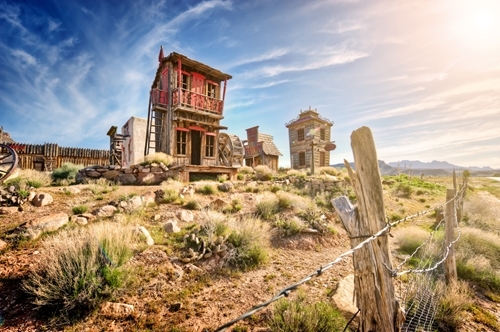As the name suggests, western riding stems from the cattle ranchers of the American West. The true riding champions weren’t Texas cowboys, according to EquiWorld. Rather, they were the vaqueros of California and other regions influenced by the colony of New Spain.
“Riders wear traditional western clothes such as long-sleeved shirts, jeans and cowboy boots.”
Leg cues in western riding are similar to those used in the English style, but they aren’t relied upon as heavily. Instead, riders use various non-visible cues, including weight, to direct the horse. In addition, riders wear traditional western clothing such as long-sleeved shirts, jeans and cowboy boots, as opposed to other forms of riding gear. Riders can add spurs if they wish but must use a western saddle and bridle.
Western riding is a little more natural and free spirited than other forms, but it nevertheless requires just as much training and dedication. Below are a few popular western events to help beginners get started:
Reining
Reining competitors must complete one of 13 patterns approved by the National Reining Horse Association and are judged on their technicality, style and the difficulty of the performance. According to Today’s Equine, the moves are reminiscent of those used by cattle ranchers. NRHA-approved competitions have divisions for all skill levels, including pros, amateurs, rookies, novices and youth.
Cutting
If you want get close to experiencing life as a vaquero, cutting is the sport for you. Riders separate a single calf from its herd, direct the animal to the center of the arena and prevent it from rejoining the group. It takes sharp reflexes, a high level of skill and an innate understanding of both horse and calf behavior. Because of these requirements, the best way to get involved is to find a local cutting trainer. The National Cutting Horse Association provides an annual publication both in print and online that lists cutting trainers by state.
Western pleasure riding
Western pleasure riding is an easy class for new competitive riders. Competitions take place in a group, so anxiety is eased somewhat by the fact that the judges don’t always have their eye on you. The word pleasure is the obvious key – judges look for a horse that is beautiful and easy to ride, not one that is anxious, ill-tempered or difficult to control. Your horse needs to travel with an easy gait and respond to loose reins and gentle direction.
Western trail
Western competitive trail takes place either over an obstacle course or on miles of natural trail. Participants in the latter category are judged not only on their ability to ride and direct a horse but the stamina of the horse itself. Veterinary judges at various inspection sites award points based on the horse’s pulse, breathing, movements, manners, fatigue, soundness and dehydration.
“Volunteering allows you to to observe the sport and get a feel for what judges look for.”
Since competitive trail riding is so much different that pleasure riding, HorseChannel suggests volunteering at a competition before entering yourself. You can work as a timer, judge secretary or even just direct competitors or spectators to their assigned locations. This allows you to observe the sport and get a feel for what judges look for.
There are numerous professional organizations to connect amateurs and experienced alike with competitive trail riding events, including the North American Trail Ride Conference, the Ontario Competitive Trail Association, the Upper Midwest Endurance and Competitive Rides Association and more. Becoming a member of one or more of these organizations usually comes with a few perks like reduced entry fees.
Even though there’s a difference between western and English riding, a good horse doesn’t care and is just happy to spend time with you. Treat your friend well with high-quality horse products to help the two of you succeed in your riding aspirations.








